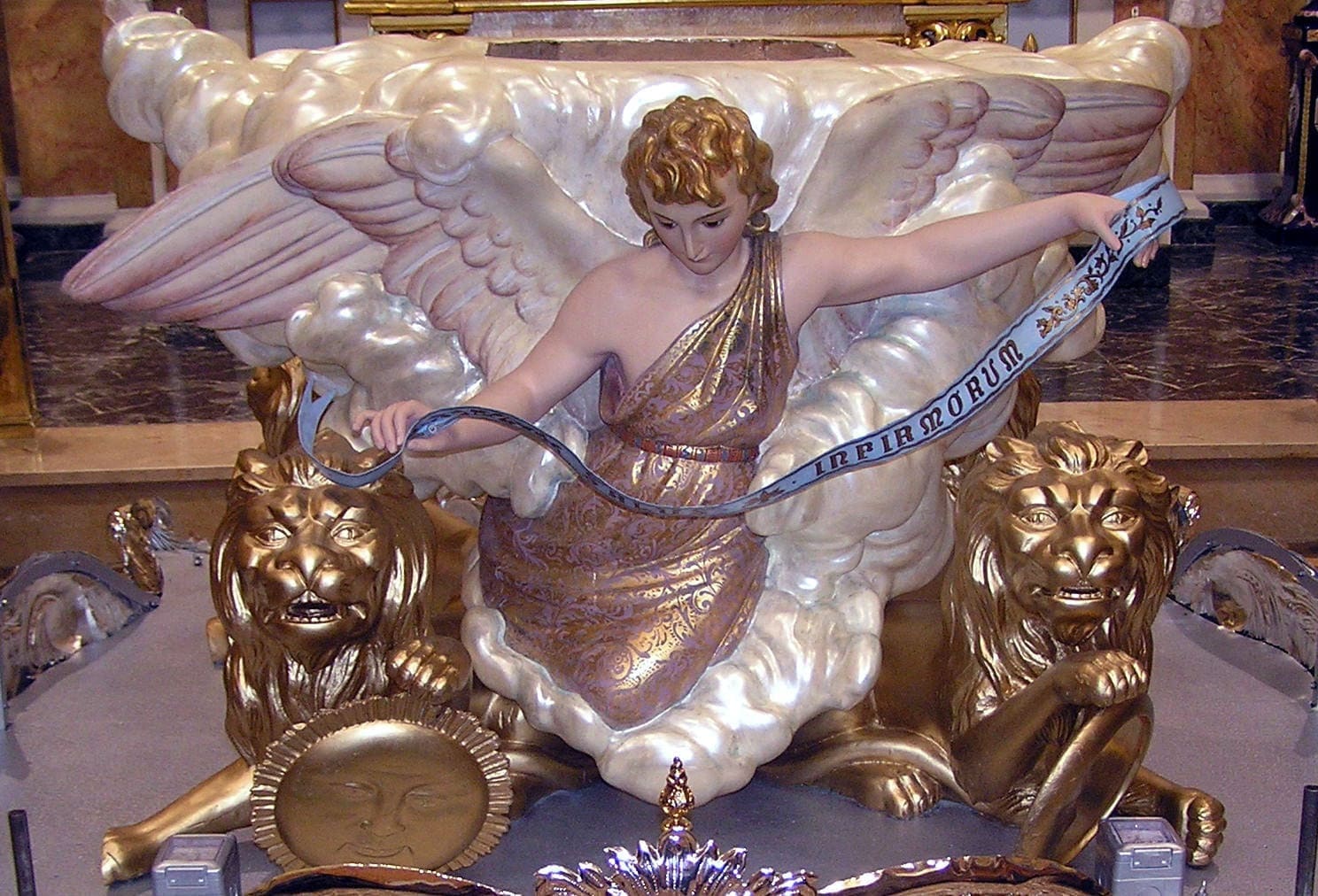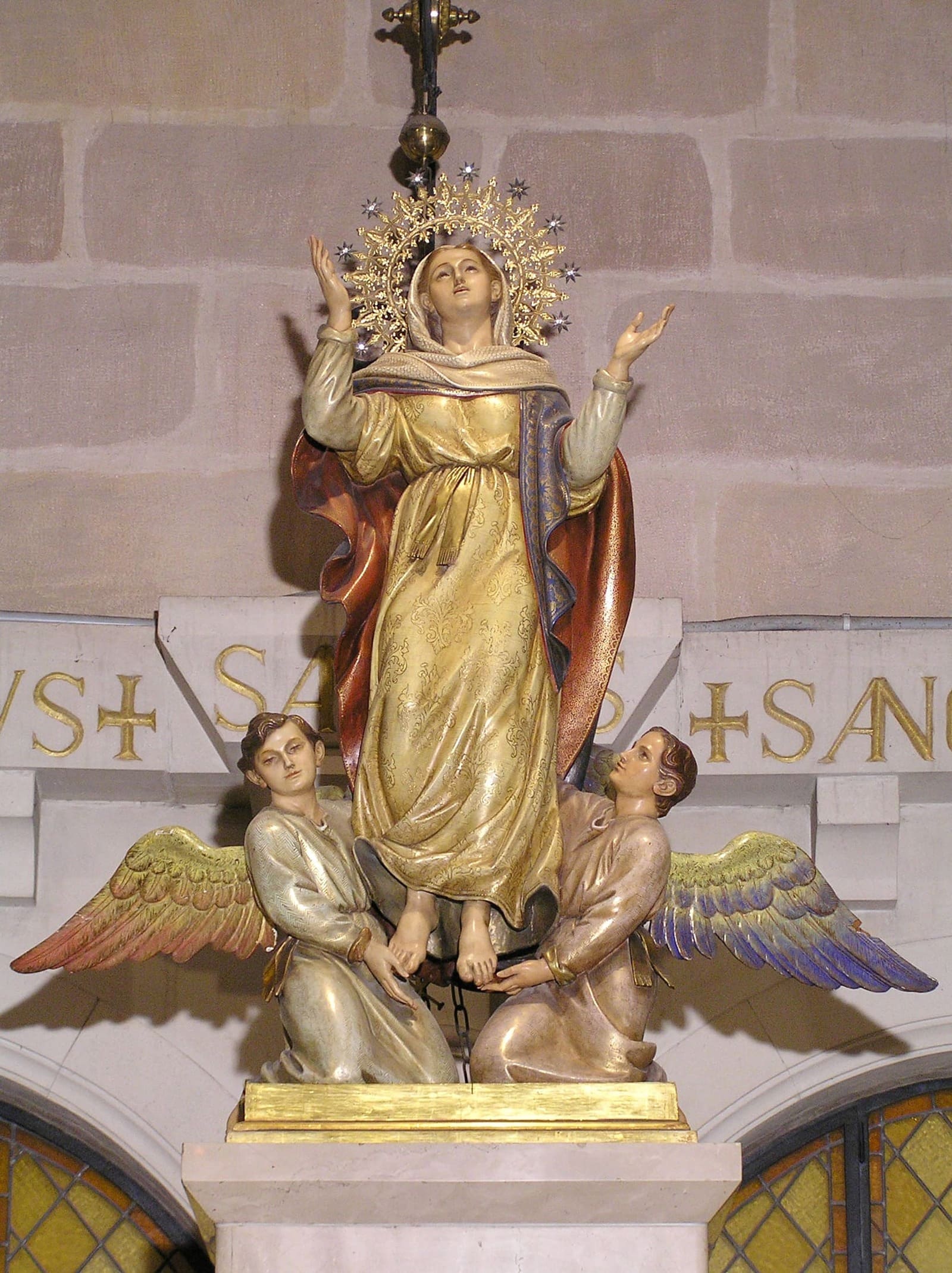2.1. His great religious work: wall and easel painting.
We can say that Remigio Soler made stand out, all over, for his huge religious work.
His great motivation was that we was born in a very religious family. His parents belonged to the 3rd Order of Saint Francis and he was trained in its spirit. So he always maintained narrow relationships with the ecclesiastic intitutions, where the majority of his religious works are kept.
But there are some of them in private collections.
We can find too wall paintings: in fresco, in tempera or in canvas joined to the wall. And easel works: on canvas, on boards, paper, cartoon or other supports; in oil, tempera, acrylic, watercolor, gouache, pastel, wax, mixed techniques. In some cases, he painted and decorated too the stained glass windows of the church or the chapel.
2.2.1. Stylistic foundations:
plastic and iconography.
His stylistic grounds were inspireted in sacred representations like the Rafael´s or Miquelangelo´s, with creation forms close to Joan de Joanes, Rubens, the italian Baroque and spanish like Tiépolo, Palomino, Murillo, Goya, Vergara, Cortina… He known some paintings from these artists in museums, palaces and churches. He always read a lot of art books to gave him an inspiration. In what that concern with Joan de Joanes, Antonio Palomino, José Vergara, Joaquin Oliet or Antonio Cortina, watched his works in valencian churches. And when he painted on that places where there were works of those painters, motivated by his mastery, Remigio Soler obtained big works that remain beside the other ones that he admired.
We have to distinguish three different groups in his religious works.
- At the beginning he followed the historicist religious paintins typical of the Neogothic and Neobyzantine art. Between borders, ornaments and gildeds, the iconographic motives in the scenes represented were handled as any other decorative element.
- A second grup make up a compendium of interpretations about Joan de Joanes works. Full of the Renaissance Academicism, bring a profound and smoothing study of his own pictorial talent and contain his own Devout Humanism.
- A third ensemble of works inspired clearly in the style of the celestial vaults from José Vergara: God Creator, the Virgin Maria and Jesus Christ, Saints and Prophets, Angel courts in a continuum motion, gestures and attitudes immanents as an expression of the divine world. To the Baroque Classicism of the compositions include plastic treatment more free and untied, less tough. He added identity signs in the faces, hair and expressions together with the contributions of the Mediterranean Luminism post-Sorolla by his landscapes.
His wide religious pictorial work is extended over a hundred churches, monasteries, chapels and hermitages around the Valencian Community and even outside. We must highlight the pictorial ensembles of Agres, Agullent, Alberic, Albuixec, Alginet, Almàssera, Almoines, Alqueria de la Comtessa, Bétera, Benidorm, Canals, Cocentaina, Énova, Font d’en Carròs, Gandia, Genovès (work semi disappeared), Massanassa, Olleria, Quartell, Rafelcofer, Serra, Serra d’en Galceran, Torrella, Vila Joiosa, Xàtiva and Carmelites AO in Caudete (Albacete). And in València city the churches of Saint Louis Bertran (Fonteta), God Mather of the Mercy (Campanar) and God Mather of Lepant (Castellar), among others.
As an original contribution to the wall painting we must mention those what narrate different scenes of saint Francis of Assis life, in the Capuchins monastery in Olleria. It shows, in a faithful way, the compositions in the illustrations by José Benlliure in «Las Florecillas de San Francisco». But the very significance of his performance lays in two aspects: firstly in the change of the sizes; from the size of the original pages of the book he made a big enlargement and translated the images from the board or paper to the walls in the monastery. And secondly he adapted the compositions adding new ornaments, new pictorical treatments and different chromatisms.
Sculpture
He devoted himself to the religious sculpture and its ornamentation and polychromy. He made imagery works with a devotional and liturgical character. This works are kept in Agullent: thel Natzaré and God Mather of August; in “la Barraca d’Aigües Vives d’Alzira”, the image of a Christ (dessapeared); in Montesa, the Christ and the Virgin and the most important work, the image of the God Mather in Agres (1939) in the old monastery of Franciscans.
Religious cult objects: decoration, ornamentation, polychromy.
He decorated and painted sacrariums, tabernacles and processional portable platforms for saints. He designed altarpieces as the one in the Torrella church. He designed, carved in wood and decorated, with his brother Joaquin, the altarpiece in the chapel of the monastery of Saint Joseph and Santa Anna in Olleria.
He carved and polycromated, in 1942, the portable platform for the Holly God Mather in Onil, again with the contribution of his brother Joaquin, and in 1958 for the Beniarjó church, among others.
For mor than ten years he managed and executed the design and floral adornments in the Holly Week monuments in the church of the Carmelites from Ayala in Madrid. There, sometimes, he worked with his son-in-law Joaquín Martí.






